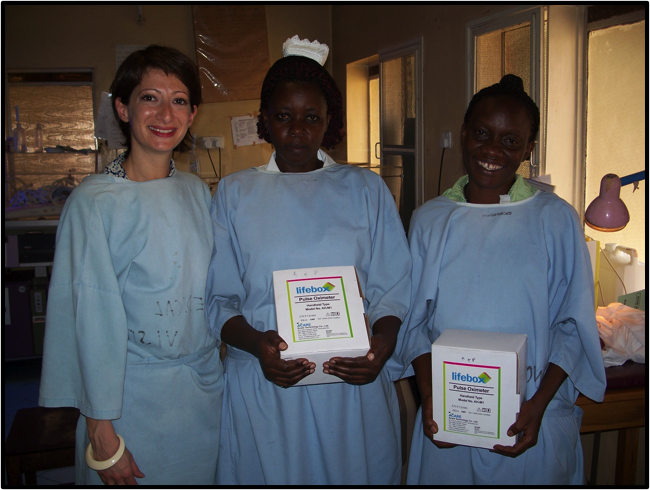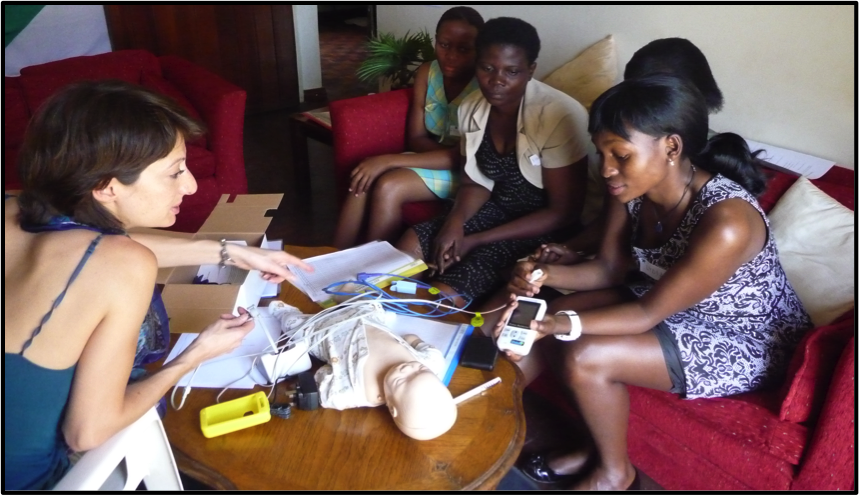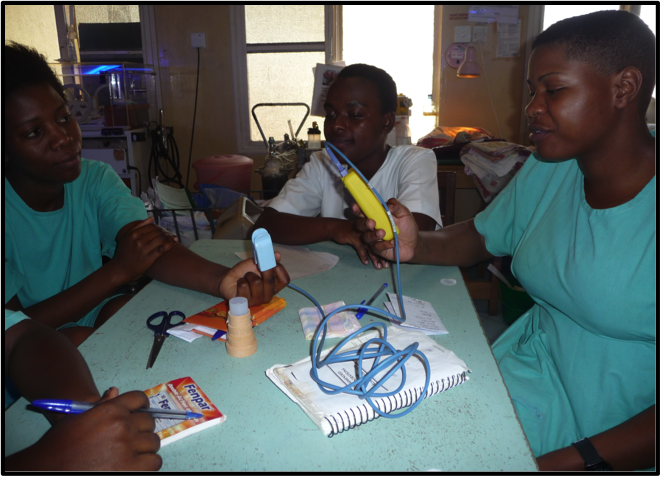Filling the vacuum
Pneumonia is one of the leading causes of childhood death worldwide.
What does that have to do with safe surgery? Nothing explicitly. But pulse oximetry monitoring is essential for oxygen therapy, a basic pneumonia treatment – and if there aren’t any oximeters in the operating theatre, what are the chances that you’ll find one on an overcrowded paediatric ward in a low-resource healthcare centre? The absence of appropriate equipment creates a vacuum that drags down everyone’s chances – simple procedures become more complicated, and essential interventions are postponed to heart-breaking, life-threatening ends.
Lifebox donates pulse oximeters to close the 77,000 operating room global gap. But we know that these devices have a life-saving utility beyond the surgical sphere, and we have a vision that oximetry and monitoring in low-resource settings will eventually saturate every corner of every hospital – just like when it was introduced into high-resource settings in the 1980s. Our environment-appropriate oximeters are available for purchase for use outside the OR, and we were delighted when a UK-based doctor raised the funds to purchase six of them, along with spare neonatal probes, for Nsambya Hospital in Uganda as part of a paediatric anaesthesia workshop in February!
The workshop was a great success – 52 health workers trained in pulse oximetry and oxygen therapy protocol, with the oximeters distributed across the outpatient dpartment, newborn unit and paediatric wards. One of the paediatricians wrote to tell us how busy she, her colleagues, and the oximeters, have been since then.
“Many children with respiratory conditions will present with respiratory distress,” she explained. “It is the commonest disorder encountered in the first 48-72 hours of life, and it is important to identify the babies that need oxygen early and promptly administer to reduce morbidity and mortality.”
She meant business: in the first three months, 1784 children had their oxygen saturations taken at point of triage. This lead to the swift identification and treatment of 123 children with oxygen therapy. 500 babies had their saturations read, and 20 were monitored continuously due to respiratory failure.
 Pulse oximetry, effectively used, is a fundamental tool for safe healthcare. A culture of safe surgery can’t grow in a vacuum and we’re thrilled to be able to support such a dedicated team, working round the clock to fill that gap and make safe patient care a priority.
Pulse oximetry, effectively used, is a fundamental tool for safe healthcare. A culture of safe surgery can’t grow in a vacuum and we’re thrilled to be able to support such a dedicated team, working round the clock to fill that gap and make safe patient care a priority.



